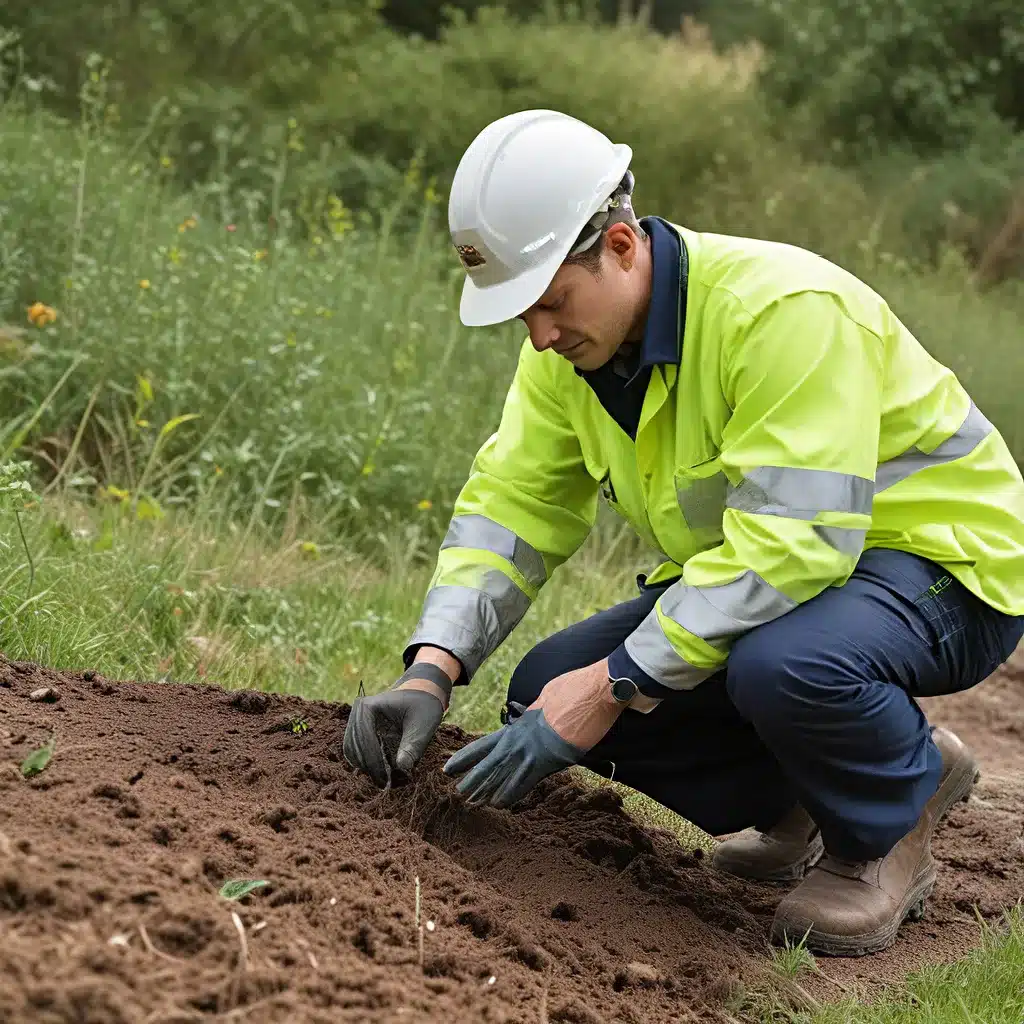
Gearing Up for a Safer, More Efficient Future
As I stood on the factory floor, the din of machinery and the bustle of workers filled the air. It was a far cry from the quiet comfort of my desk, but this was where the real action happened. I had come to witness firsthand how a leading environmental services company was revolutionizing its approach to safety training, and let me tell you, it was nothing short of eye-opening.
Bridging the Gap Between Theory and Practice
For years, the industry had relied on generic safety training programs, the kind that had you zoning out after the first few minutes. But the team at Inland Waters Inc. had a different vision. They understood that effective safety training wasn’t just about checking boxes or reciting regulations – it was about empowering their frontline workers to navigate the real-world challenges they faced every day.
“We realized that a one-size-fits-all approach just wasn’t cutting it,” explained Sarah, the company’s safety manager. “Our workers were dealing with unique risks and scenarios that couldn’t be adequately addressed in a standard training session.”
Customizing the Training Experience
That’s when Inland Waters took a bold step – they decided to build their own tailored safety training programs. Drawing insights from sources like Dakota Software’s blog, they set out to create a training experience that was as dynamic as the work itself.
“We started by really digging into the specifics of each role,” Sarah said. “What were the unique hazards they faced? What skills did they need to navigate those challenges? That became the foundation for our training curriculum.”
Embracing a Diverse Learning Landscape
But Inland Waters didn’t stop there. They recognized that their workforce was a tapestry of diverse learning styles and preferences. Some thrived in hands-on simulations, while others responded better to visual aids or interactive scenarios.
“We wanted to make sure everyone felt engaged and empowered,” Sarah noted. “So, we incorporated a mix of teaching methods – from virtual reality walkthroughs to gamified assessments. The goal was to create an immersive learning experience that spoke to each individual.”
The Power of Microlearning
One of the standout features of Inland Waters’ training program was its embrace of microlearning. Instead of overwhelming workers with lengthy, dense modules, they broke down the content into bite-sized, easily digestible chunks.
“Our frontline teams are constantly on the move, juggling multiple tasks and responsibilities,” Sarah explained. “Microlearning allows them to access the information they need, when they need it, without disrupting their workflow.”
Adaptive Learning for Personalized Growth
But the real magic happened when Inland Waters integrated adaptive learning technologies into their training approach. These systems analyzed each worker’s progress and tailored the content to their specific needs and learning pace.
“It’s all about catering to the individual,” Sarah said. “We can identify skill gaps, reinforce areas of weakness, and accelerate growth – all while keeping the training relevant and engaging.”
Fostering a Culture of Continuous Improvement
Of course, Inland Waters didn’t stop at just implementing these innovative training programs. They knew that for true transformation to take hold, safety had to become ingrained in the very fabric of the organization.
“We made a concerted effort to elevate the importance of training throughout the company,” Sarah revealed. “From leadership setting the tone to employees sharing their experiences, it became a central part of our company culture.”
Dashboards and progress reports kept everyone informed and motivated, while regular audits ensured the training remained aligned with evolving industry standards and regulations.
Measuring the Impact
The results of Inland Waters’ efforts were nothing short of remarkable. Workplace incidents and injuries plummeted, while employee satisfaction and retention soared. But the true measure of success, according to Sarah, was the newfound confidence and competence of the frontline team.
“Our workers are no longer just going through the motions,” she explained. “They’re actively engaged in the process, offering insights and ideas that have helped us refine the training even further.”
The Road Ahead
As I stepped back out onto the factory floor, I couldn’t help but feel a sense of excitement for the future. Inland Waters had proven that when you empower your workforce with tailored, technology-driven training, the possibilities for growth and innovation are limitless.
“This is just the beginning,” Sarah said, a gleam in her eye. “We’re constantly exploring new ways to push the boundaries of what’s possible in environmental services. And you can bet safety will be at the heart of everything we do.”
With that, she turned and strode back into the bustling world of water treatment and environmental management, leaving me to ponder the transformative power of customized training programs. It was a glimpse into a future where worker safety and organizational success were inextricably linked – and I couldn’t wait to see what Inland Waters would accomplish next.


